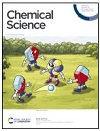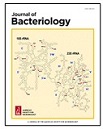Latest Publications
Fluorinated trehalose analogues for cell surface engineering and imaging of Mycobacterium tuberculosis
 Collette S. Guy, James A. Gott, Jonathan Ramírez-Cárdenas, Christopher de Wolf, Christopher M. Furze, Geoff West, Juan C. Muñoz-García, Jesus Angulo and Elizabeth Fullam
Collette S. Guy, James A. Gott, Jonathan Ramírez-Cárdenas, Christopher de Wolf, Christopher M. Furze, Geoff West, Juan C. Muñoz-García, Jesus Angulo and Elizabeth Fullam
The sensitive, rapid and accurate diagnosis of Mycobacterium tuberculosis (Mtb) infection is a central challenge in controlling the global tuberculosis (TB) pandemic. Yet the detection of mycobacteria is often made difficult by the low sensitivity of current diagnostic tools, with over 3.6 million TB cases missed each year. To overcome these limitations there is an urgent need for next-generation TB diagnostic technologies. Here we report the use of a discrete panel of native 19F-trehalose (F-Tre) analogues to label and directly visualise Mtb by exploiting the uptake of fluorine-modified trehalose analogues via the mycobacterial trehalose LpqY-SugABC ATP-binding cassette (ABC) importer.. This rapid one-step labelling approach facilitates the direct visualisation of F-Tre-labelled Mtb by Focused Ion Beam (FIB) Secondary Ion Mass Spectrometry (SIMS), enabling detection of the Mtb pathogen. Collectively, our findings highlight that F-Tre analogues have potential as tools to probe and unravel Mtb biology and can be exploited to detect and image TB
A new model of endotracheal tube biofilm identifies combinations of matrix-degrading enzymes and antimicrobials able to eradicate biofilms of pathogens that cause ventilator-associated pneumonia
 Dean Walsh, Chris Parmenter, Saskia E Bakker, Trevor Lithgow, Ana Traven, Freya Harrison
Dean Walsh, Chris Parmenter, Saskia E Bakker, Trevor Lithgow, Ana Traven, Freya Harrison
Ventilator-associated pneumonia is defined as pneumonia that develops in a patient who has been on mechanical ventilation for more than 48 hours through an endotracheal tube. It is caused by biofilm formation on the indwelling tube, which introduces pathogenic microbes such as Pseudomonas aeruginosa, Klebsiella pneumoniae and Candida albicans into the patient's lower airways. Currently, there is a lack of accurate in vitro models of ventilator-associated pneumonia development. Here, we showcase a reproducible model that simulates the biofilm formation of these pathogens in a host-mimicking environment and demonstrate that the biofilm matrix produced differs from that observed in standard laboratory growth medium. Our in vitro endotracheal tube model informs on fundamental microbiology in the ventilator-associated pneumonia context and has broad applicability as a screening platform for antibiofilm measures including the use of matrix-degrading enzymes as antimicrobial adjuvants.
Structure of the MlaC-MlaD complex reveals molecular basis of periplasmic phospholipid transport
 Peter Wotherspoon, Hannah Johnston, David J. Hardy, Rachel Holyfield, Soi Bui, Giedrė Ratkevičiūtė, Pooja Sridhar, Jonathan Colburn, Charlotte B. Wilson, Adam Colyer, Benjamin F. Cooper, Jack A. Bryant, Gareth W. Hughes, Phillip J. Stansfeld, Julien R. C. Bergeron & Timothy J. Knowles
Peter Wotherspoon, Hannah Johnston, David J. Hardy, Rachel Holyfield, Soi Bui, Giedrė Ratkevičiūtė, Pooja Sridhar, Jonathan Colburn, Charlotte B. Wilson, Adam Colyer, Benjamin F. Cooper, Jack A. Bryant, Gareth W. Hughes, Phillip J. Stansfeld, Julien R. C. Bergeron & Timothy J. Knowles
The Maintenance of Lipid Asymmetry (Mla) pathway is a multicomponent system found in all gram-negative bacteria that contributes to virulence, vesicle blebbing and preservation of the outer membrane barrier function. Here, we report the structure of E. coli MlaC in complex with the MlaD hexamer in two distinct stoichiometries. Utilising in vivo complementation assays, an in vitro fluorescence-based transport assay, and molecular dynamics simulations, we confirm key residues, identifying the MlaD β6-β7 loop as essential for MlaCD function. We also provide evidence that phospholipids pass between the C-terminal helices of the MlaD hexamer to reach the central pore, providing insight into the trajectory of GPL transfer between MlaC and MlaD.
Biophysical cartography of the native and human-engineered antibody landscapes quantifies the plasticity of antibody developability
 Habib Bashour, Eva Smorodina, Matteo Pariset, Jahn Zhong, Rahmad Akbar, Maria Chernigovskaya, Khang Lê Quý, Igor Snapkow, Puneet Rawat, Konrad Krawczyk, Geir Kjetil Sandve, Jose Gutierrez-Marcos, Daniel Nakhaee-Zadeh Gutierrez, Jan Terje Andersen & Victor Greiff
Habib Bashour, Eva Smorodina, Matteo Pariset, Jahn Zhong, Rahmad Akbar, Maria Chernigovskaya, Khang Lê Quý, Igor Snapkow, Puneet Rawat, Konrad Krawczyk, Geir Kjetil Sandve, Jose Gutierrez-Marcos, Daniel Nakhaee-Zadeh Gutierrez, Jan Terje Andersen & Victor Greiff
Designing effective monoclonal antibody (mAb) therapeutics faces a multi-parameter optimization challenge known as “developability”, which reflects an antibody’s ability to progress through development stages based on its physicochemical properties. To chart natural and engineered DP landscapes, we computed 40 sequence- and 46 structure-based DPs of over two million native and human-engineered single-chain antibody sequences. We show that sequence DPs are more predictable than structure-based ones across different machine-learning tasks and embeddings, indicating a constrained sequence-based design space. Human-engineered antibodies localize within the developability and sequence landscapes of natural antibodies, suggesting that human-engineered antibodies explore mere subspaces of the natural one. Our work quantifies the plasticity of antibody developability, providing a fundamental resource for multi-parameter therapeutic mAb design.
Direct water-soluble molecules transfer from transplanted bone marrow mononuclear cell to hippocampal neural stem cells
 Okinaka Y, Maeda M, Kataoka Y, Nakagomi T, Doi A, Boltze J, Claussen C, Gul S, Taguchi A
Okinaka Y, Maeda M, Kataoka Y, Nakagomi T, Doi A, Boltze J, Claussen C, Gul S, Taguchi A
Intravascularly transplanted bone marrow cells, including bone marrow mononuclear cells (BM-MNC) and mesenchymal stem cells, transfer water-soluble molecules to cerebral endothelial cells via gap junctions. Following transplantation of BM-MNC, this fosters hippocampal neurogenesis and enhancement of neuronal function. Herein, we report the impact of transplanted BM-MNC on neural stem cells (NSC) in the brain. Surprisingly, direct transfer of water-soluble molecules from transplanted BM-MNC and peripheral mononuclear cells to NSC in the hippocampus was observed already 10 minutes after cell transplantation, and transfer from BM-MNC to GFAP-positive cortical astrocytes was also observed. In-vitro investigations revealed that BM-MNC abolish the expression of HIF1α in astrocytes. We suggest that the transient and direct transfer of water-soluble molecules between cells in circulation and NSC in the brain may be one of the biological mechanisms underlying repair of brain function.
SpoIIQ-dependent localization of SpoIIE contributes to septal stability and compartmentalization during the engulfment stage of Bacillus subtilis sporulation
 Behzad Dehghani, Christopher D. A. Rodrigues
Behzad Dehghani, Christopher D. A. Rodrigues
During spore development in bacteria, a polar septum separates two transcriptionally distinct cellular compartments, the mother cell and the forespore. The conserved serine phosphatase SpoIIE is known for its critical role in the formation of this septum and activation of compartment-specific transcription in the forespore. Signaling between the mother cell and forespore then leads to activation of mother cell transcription and a phagocytic-like process called engulfment, which involves dramatic remodeling of the septum and requires a balance between peptidoglycan synthesis and hydrolysis to ensure septal stability and compartmentalization. Using Bacillus subtilis, we identify an additional role for SpoIIE in maintaining septal stability and compartmentalization at the onset of engulfment. Our data support a model whereby SpoIIE and its interactions with the peptidoglycan synthetic machinery contribute to the stabilization of the asymmetric septum early in engulfment, thereby ensuring compartmentalization during spore development.
